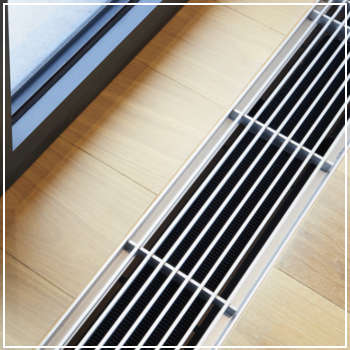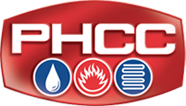6 HVAC Maintenance Projects for Fall
 Now that fall has begun, you likely won’t turn on your air conditioner again until late May. You may open windows on the occasional warm day, but the heating system will be on before we know it. For homeowners, now’s the time to prepare your air conditioner for winter hibernation and revive the heating system.
Now that fall has begun, you likely won’t turn on your air conditioner again until late May. You may open windows on the occasional warm day, but the heating system will be on before we know it. For homeowners, now’s the time to prepare your air conditioner for winter hibernation and revive the heating system.
Early maintenance can identify leaks and other issues that could lead to a breakdown later in the season. For many, the HVAC system consumes about half of the energy expended in the home, so homeowners can focus on the following to help lower heating costs this winter.
1. Evaluate System Efficiency
As a baseline, if your system is older than 10 years or past the 15-year mark, it’s not as efficient as modern units. In fact, older technology and operation may drive up HVAC costs as much as 60 percent.
If your system is newer, make sure it isn’t working overtime. Start by having it cleaned and check areas around your home where air could be escaping, including windows and doors, the attic and around pipes. Seal these off before outdoor temperatures drop.
2. Clean and Replace Filters
Check your system’s filters to ensure they’re not clogged with dirt and debris. Depending on their condition, remove all buildup or have the filter switched out entirely. Leaving accumulated dirt and debris prevents air from flowing through, causing your HVAC system to work harder, driving up costs and reducing overall efficiency. As a guideline, check the filters every one to three months.
Unsure of which filter to use? First check your owner’s manual and make sure to purchase one with a MERV (Minimum Efficiency Reporting Value) rating of 7 or higher.
3. Check Vents and Registers
Walk through your home to make sure all return and supply vents are open. No rugs or furniture should be blocking the vents. At the same time, clean off any dust, dirt or debris that has gathered in the vent throughout spring and summer. Removing buildup not only makes your system more efficient but prevents these particles from spreading through your home.
If you won’t be using certain rooms in your home this season, consider closing the registers. This diverts the heat to rooms in regular use. Don’t shut off every register, as this can disrupt air pressure in your heating system.
4. Reprogram the Thermostat
Programmable thermostats are more energy-efficient than manual ones, letting you automatically adjust temperatures throughout the day to prevent wasted heat. Update yours to keep rooms warm whenever you’re home and lower to a cooler temperature while you’re away.
5. Get Your System Inspected
After giving your system a once-over, it’s time to reach out to the professionals. Ideally, maintenance should be scheduled twice a year to make sure your system remains functional and efficient. Tune-up visits typically entail:
- Inspecting the ignition burner and any heating elements
- Making sure the flue is securely attached to the furnace
- Checking for possible gas leaks and assessing gas pressure
- Evaluating all pulleys, belts, drain lines, pans and electrical connections
- Lubricating any moving parts
- Checking the thermostat and its controls
- Making sure the fan and blower are working
- Inspecting the heat pump, ducts and vents
6. Regularly Check Outdoor Unit
If your HVAC system is partially outdoors, keep it free of debris. This time of year, leaves, pollen, sticks and dirt collect on top and around the sides. Removing debris reduces clogs and prevents your system from overheating or working too hard.
As you perform regular checks and cleanings throughout the season, take a second to listen. A rattling noise could indicate something is stuck in the vents, loose bolts or another blockage of some kind. If you hear any unusual sounds, contact us for service.
To get started on the transition from warm to cold weather, schedule a residential HVAC inspection with M.J. Fahy & Sons. To learn more, give us a call today.




